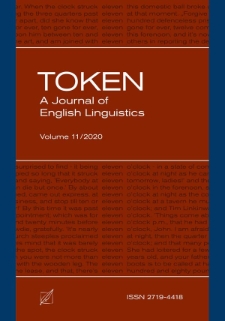Biblioteka Cyfrowa Uniwersytetu Jana Kochanowskiego udostępnia 13 273 obiektów cyfrowych
Obiekt
Tytuł: Museums as communicators: Teaching or sharing knowledge?
Twórca:
Tytuł publikacji grupowej:
Abstrakt:
The aim of the paper is to investigate museum communication and establish to whatextent museums are responding to the changing social context of the early 21st century.Museums have been traditionally perceived as authoritative and distant repositories ofknowledge. Over the last few decades there has been a drive to make museum visitsmeaningful experiences for all peoples of different origins and backgrounds, includingthe development of websites, not only as a marketing strategy, but also as an importantchannel of knowledge dissemination. The data has been collected from the websites offour of the most important art galleries in Europe. Using a Critical Discourse Analysisapproach and drawing on Blunden’s work on museum communication (2017a, 2017b),the analysis will focus firstly on the webpages where the museum presents itself to thepublic as well as explain its principles, beliefs and objectives. It will then analyse whatkind of information about the artefacts in the museums is given and especially how itis conveyed to the visitor. The findings reveal the different approaches adopted by themuseums.
Miejsce wydania:
ISSN:
Wydawca:
Wydawnictwo Uniwersytetu Jana Kochanowskiego w Kielcach
Data wydania:
Identyfikator:
oai:bibliotekacyfrowa.ujk.edu.pl:4251 doi:10.25951/4311
Język:
Jest częścią:
Token : A Journal of English Linguistics
Ma część:
Typ:
Prawa dostępu:
Format:
Kolekcje, do których przypisany jest obiekt:
- Biblioteka Cyfrowa Uniwersytetu Jana Kochanowskiego > Wydawnictwo Uniwersyteckie > Wydawnictwa ciągłe
- Biblioteka Cyfrowa Uniwersytetu Jana Kochanowskiego > Wydawnictwo Uniwersyteckie > Wydawnictwa ciągłe > "Token : A Journal of English Linguistics"
Data ostatniej modyfikacji:
4 kwi 2025
Data dodania obiektu:
25 lis 2021
Liczba wyświetleń treści obiektu:
181
Liczba wyświetleń treści obiektu w formacie PDF
253
Wszystkie dostępne wersje tego obiektu:
https://bibliotekacyfrowa.ujk.edu.pl/publication/4311
Wyświetl opis w formacie RDF:
Wyświetl opis w formacie OAI-PMH:
| Nazwa wydania | Data |
|---|---|
| Turnbul, Judith, Museums as communicators: Teaching or sharing knowledge? | 4 kwi 2025 |
Obiekty Podobne
Turnbull, Judith Newman, John G. Ed. Dossena, Marina. Ed. Shvanyukova, Polina. Ed. Bianchi, Francesca. Guest ed. Bruti, Silvia. Guest ed. Cappelli, Gloria. Guest ed. Manca, Elena. Guest ed.

